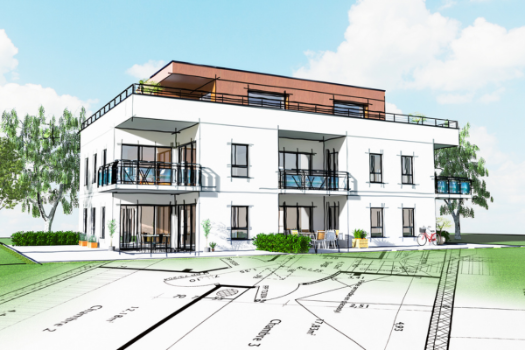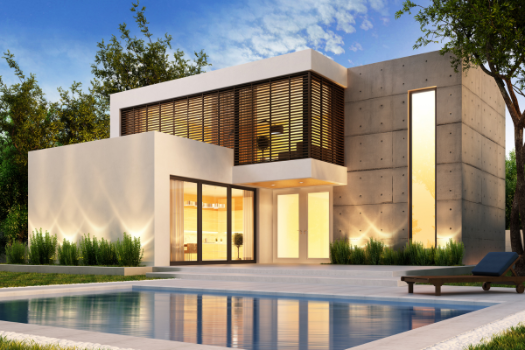.png)
How BIM Identifies Cost-Saving Opportunities in Real Time
Introduction: The Role of BIM in Cost Management
Managing costs in construction is a constant challenge. Traditional methods often lack the transparency and control needed to keep projects on track. This can lead to inefficiencies, unexpected expenses, and missed deadlines. Construction teams need better tools to ensure costs stay within budget from start to finish.
Building Information Modeling (BIM) solves these problems by offering a digital model that integrates a building’s physical and functional details. BIM centralizes all project data, making it easier to track costs in real time. Teams can identify cost-saving opportunities early, make smarter decisions, and avoid surprises during construction.
With real-time updates and seamless collaboration, BIM empowers stakeholders to manage budgets more effectively. It not only reduces unnecessary expenses but also enhances project efficiency. In today’s competitive construction landscape, BIM has become essential for smarter, more streamlined cost management.
Accurate Cost Estimation and Budget Management
Accurate cost estimation is vital for any construction project. Traditional methods often leave room for errors, causing budget overruns and delays. BIM changes this by integrating detailed 3D models with cost data. This integration allows teams to calculate precise material quantities, labor needs, and equipment costs.

With BIM, quantity take-offs are automatic and more accurate. This eliminates the guesswork common in traditional approaches. Teams can generate detailed budget forecasts that align with the project’s scope and timeline. This precision helps avoid unexpected costs and keeps the project on track financially.
BIM also provides a clear and comprehensive view of the project's financial health. Stakeholders can assess costs at every stage and identify areas where adjustments are needed. This real-time visibility enables smarter decisions, ensuring resources are used efficiently and waste is minimized.
By reducing errors and improving cost control, BIM helps projects stay within budget. It also fosters better communication among stakeholders, as everyone works from the same accurate data. This collaborative approach ensures that cost estimation and budget management are streamlined, reducing financial risks and improving overall project success.
Enhanced Design Visualization and Clash Detection
BIM’s 3D modeling capabilities allow stakeholders to see a detailed representation of the project before construction starts. This visualization provides a clear understanding of how the final product will look and function. It bridges the gap between design and execution, helping everyone involved to stay aligned.

One of BIM’s strongest features is its ability to identify clashes in the design. These clashes occur when different building systems—like plumbing, electrical, and structural components—conflict with one another. With BIM, these issues are detected early in the digital model, long before they become problems on-site.
Resolving these clashes digitally saves time and money. Teams can address constructability issues before materials are ordered or construction begins. This proactive approach reduces costly rework, minimizes delays, and ensures smoother project execution.
Additionally, BIM improves collaboration among stakeholders by offering a centralized model where changes and solutions can be shared in real time. This transparency not only improves project accuracy but also fosters trust among team members.
By combining enhanced visualization with early clash detection, BIM ensures projects are better planned, executed efficiently, and delivered without unexpected costs or delays.
Enhanced Collaboration and Communication
BIM acts as a single, centralized platform where all project stakeholders can access the latest information. This shared access ensures everyone stays informed, reducing the chance of miscommunication. When all team members are on the same page, workflows become smoother, and decisions are made faster.

The transparency provided by BIM minimizes misunderstandings and costly errors. Design changes, updates, and feedback can be shared in real time, allowing for quick adjustments without confusion. This streamlined process fosters a collaborative environment where architects, engineers, contractors, and clients work together effectively.
Improved communication through BIM also leads to better project execution. Teams can anticipate and resolve issues before they impact the timeline or budget. By aligning everyone with the project’s goals, BIM not only enhances efficiency but also ensures cost savings and timely delivery.
Streamlined Construction Scheduling and Logistics
BIM integrates time-related data, known as 4D BIM, to help teams plan construction activities more effectively. With this feature, teams can simulate the entire construction sequence before work begins. This proactive approach allows stakeholders to identify potential delays or bottlenecks and adjust schedules accordingly.

By visualizing how different phases of the project overlap, teams can allocate resources more efficiently. Labor, materials, and equipment are scheduled with precision, ensuring they are available when needed and reducing idle time. This level of planning helps avoid costly disruptions and keeps the project moving smoothly.
4D BIM also enhances communication among stakeholders by providing a clear timeline for everyone involved. It fosters collaboration and ensures all parties are aligned with the project schedule. By optimizing logistics and streamlining scheduling, BIM helps deliver projects on time and within budget while improving overall efficiency.
Sustainable Design and Energy Efficiency
BIM enables project teams to analyze energy performance and sustainability factors during the early design stages. This analysis helps identify ways to reduce energy consumption and improve efficiency. By examining elements like building orientation, material choices, and system designs, BIM ensures projects are both cost-effective and environmentally friendly.

With BIM, teams can simulate different design scenarios to find the most energy-efficient solutions. This reduces reliance on guesswork and leads to smarter decisions. Optimized designs lower operational costs by minimizing energy use, saving money over the building's lifespan.
BIM also supports green building initiatives by aligning designs with sustainability goals. Reduced energy consumption, less material waste, and efficient systems contribute to a smaller carbon footprint. By focusing on sustainable practices, BIM not only cuts costs but also helps create buildings that are better for the planet and future generations.
Facility Management and Lifecycle Cost Reduction
BIM’s benefits extend far beyond construction. It serves as a valuable tool for facility management by offering detailed information about building components and systems. This comprehensive digital record includes data on materials, equipment, and maintenance schedules, helping facility managers plan and operate efficiently.

Preventive maintenance becomes more manageable with BIM. Managers can identify potential issues early and address them before they escalate into costly repairs. This proactive approach reduces unplanned downtime and ensures the building operates smoothly.
Lifecycle costs are also optimized with BIM. By using accurate data to make informed decisions, facility managers can extend the lifespan of building systems and reduce overall maintenance expenses. Efficient operation not only saves money but also enhances the long-term value of the property.
BIM bridges the gap between construction and facility management, ensuring that buildings remain cost-effective and functional throughout their entire lifecycle.
Conclusion: The Strategic Advantage of BIM in Cost Savings
BIM provides a clear strategic advantage for construction projects by identifying and implementing cost-saving opportunities in real time. Its ability to integrate design, construction, and facility management ensures that projects stay within budget and operate efficiently.
From precise cost estimation to streamlined scheduling and energy efficiency, BIM addresses every phase of a building’s lifecycle. By reducing errors, minimizing waste, and optimizing resources, BIM not only saves money but also enhances overall project success. For today’s construction industry, BIM is an essential tool for achieving cost efficiency and long-term value.